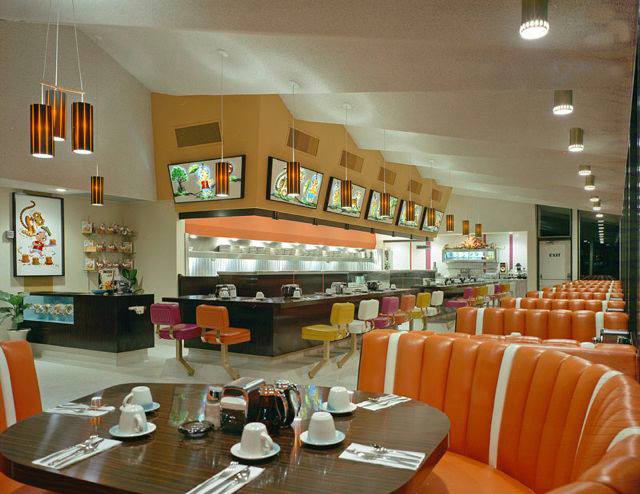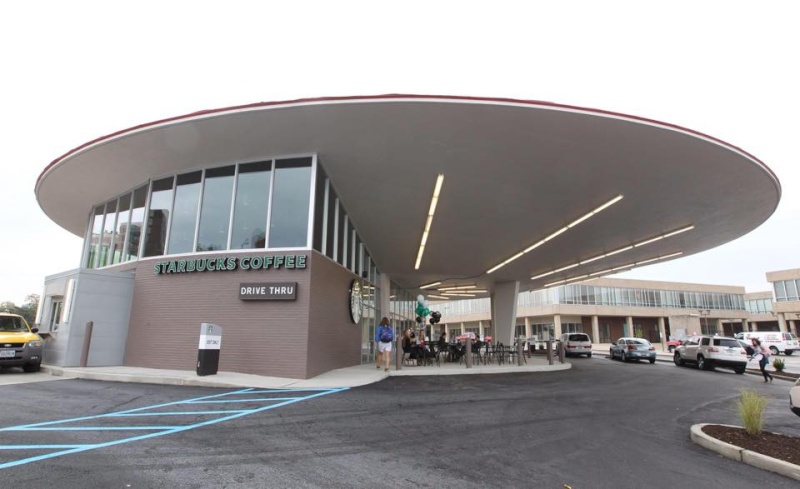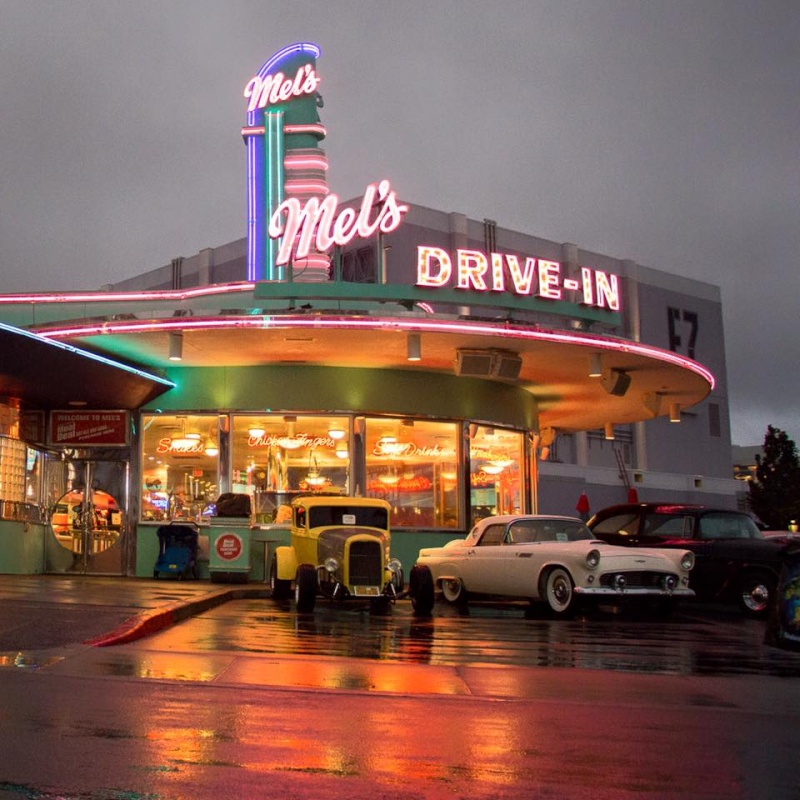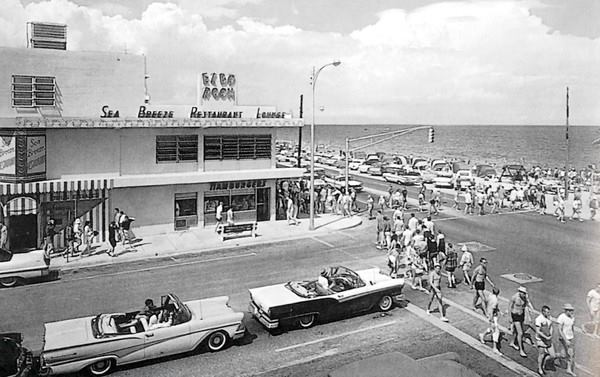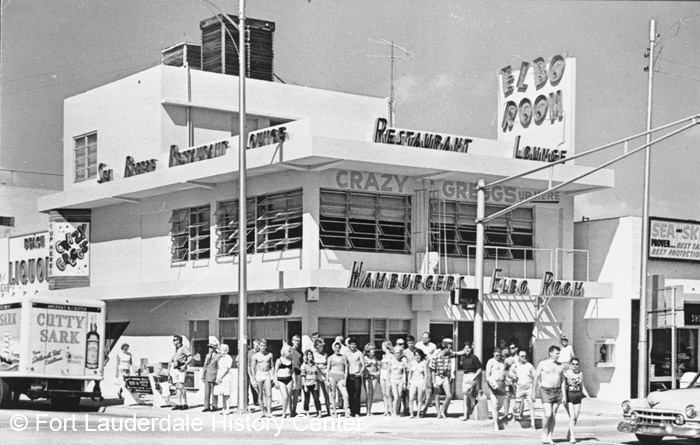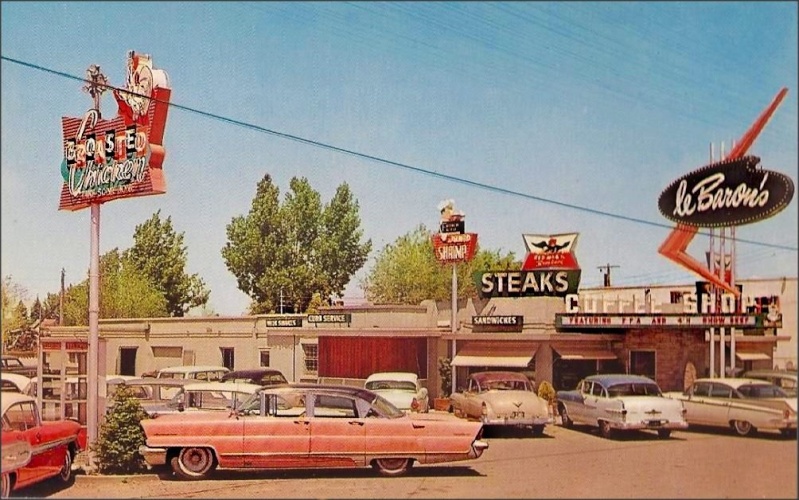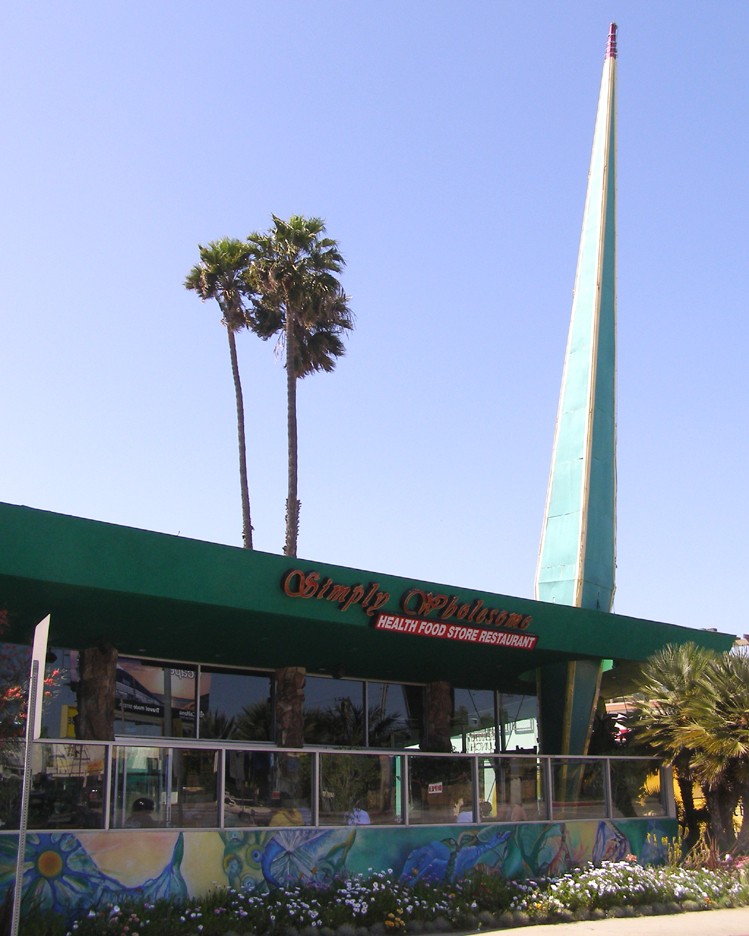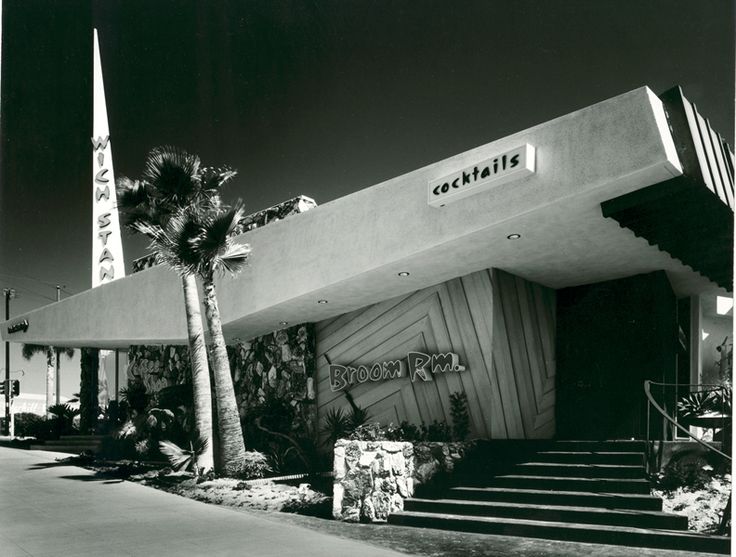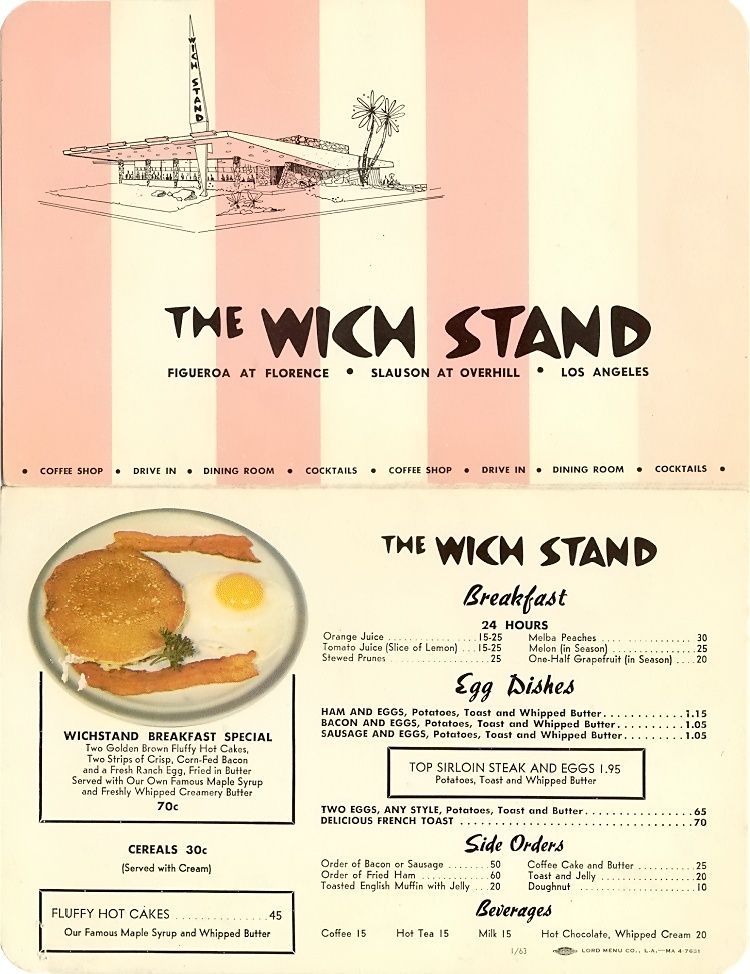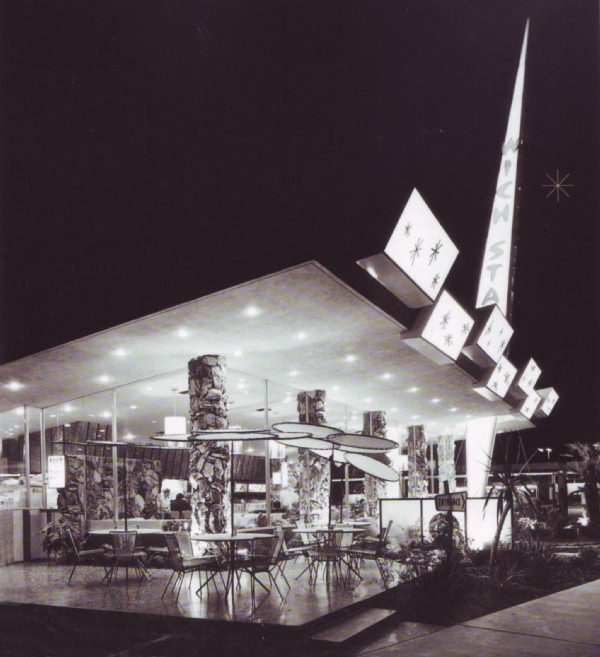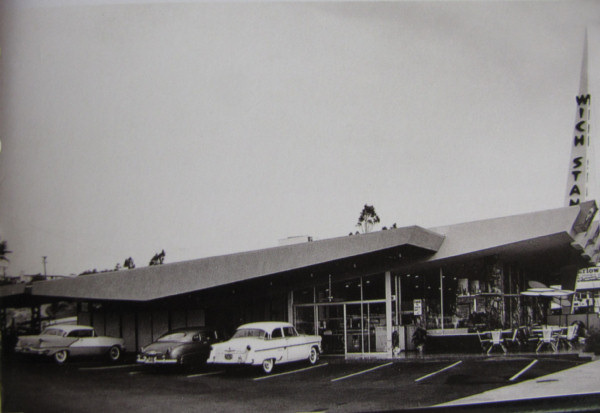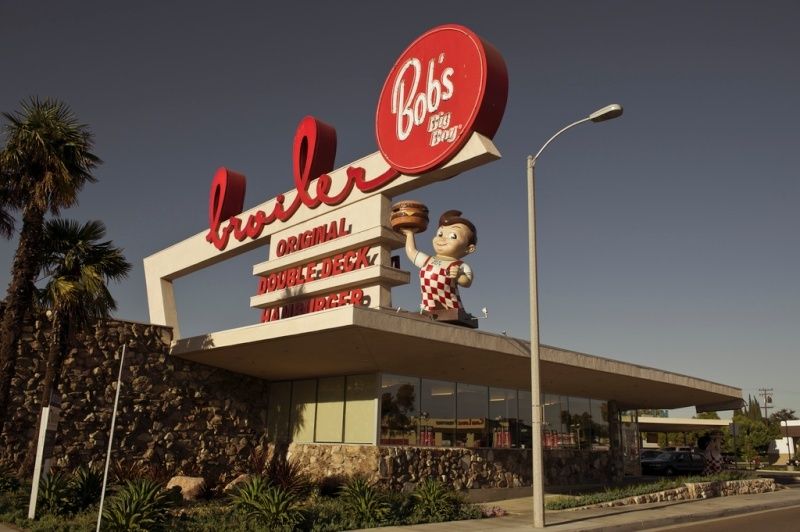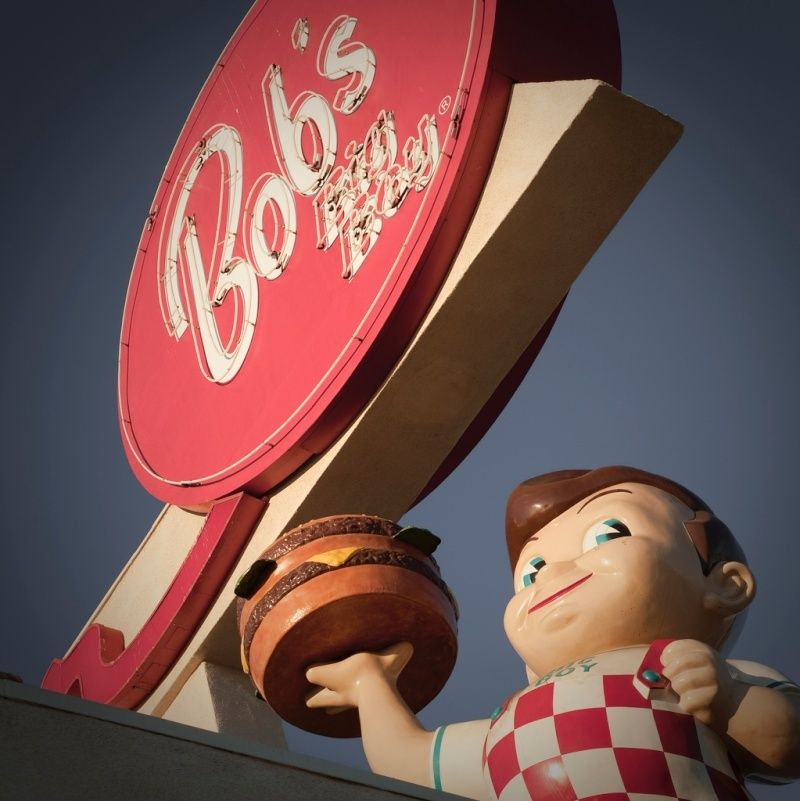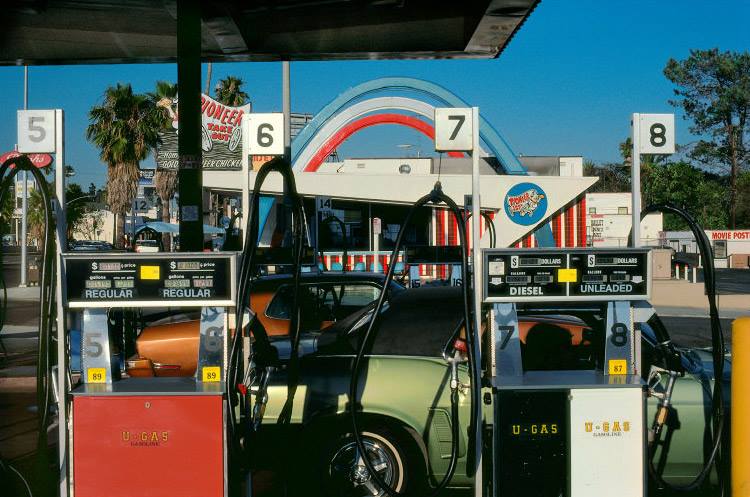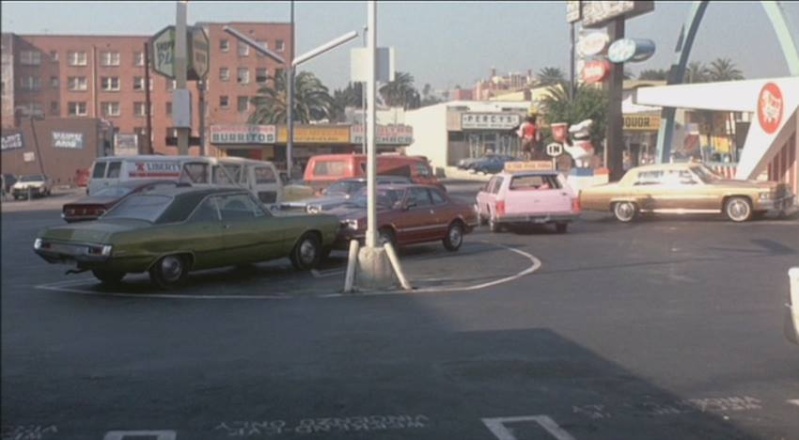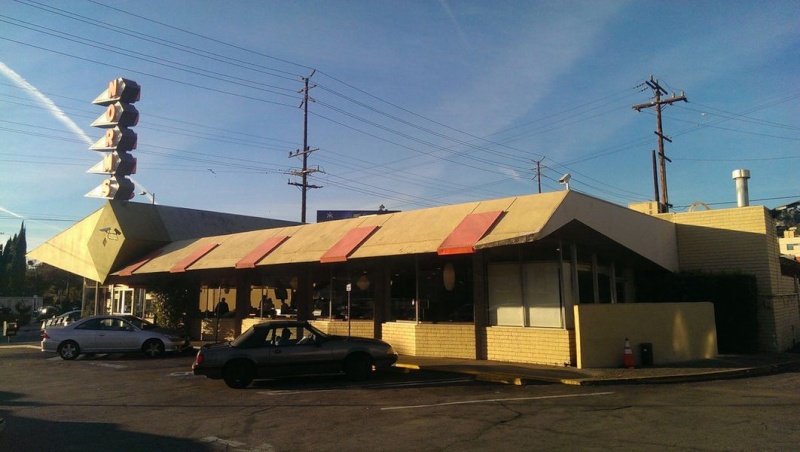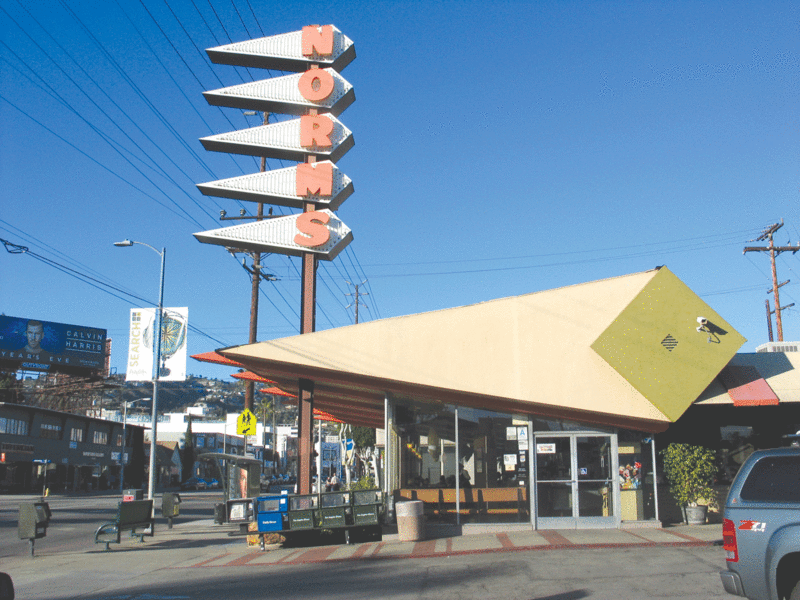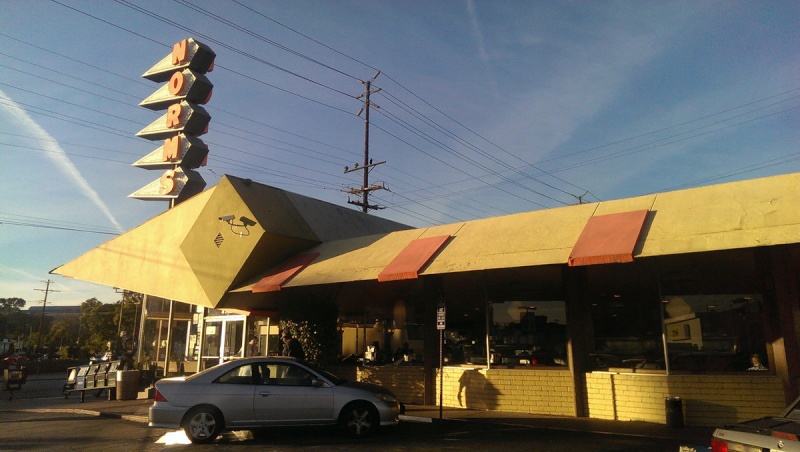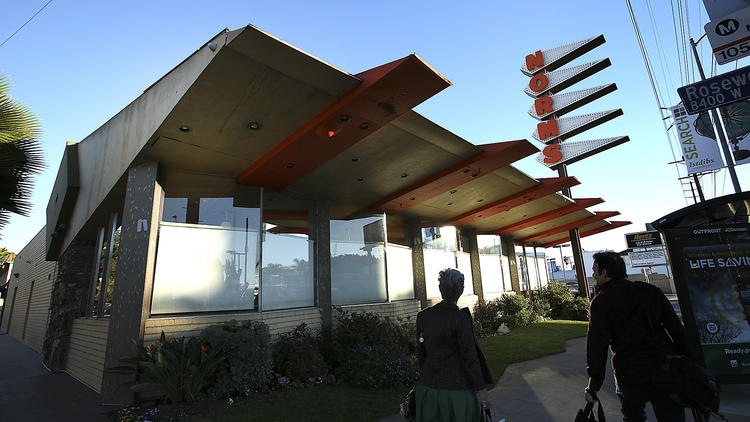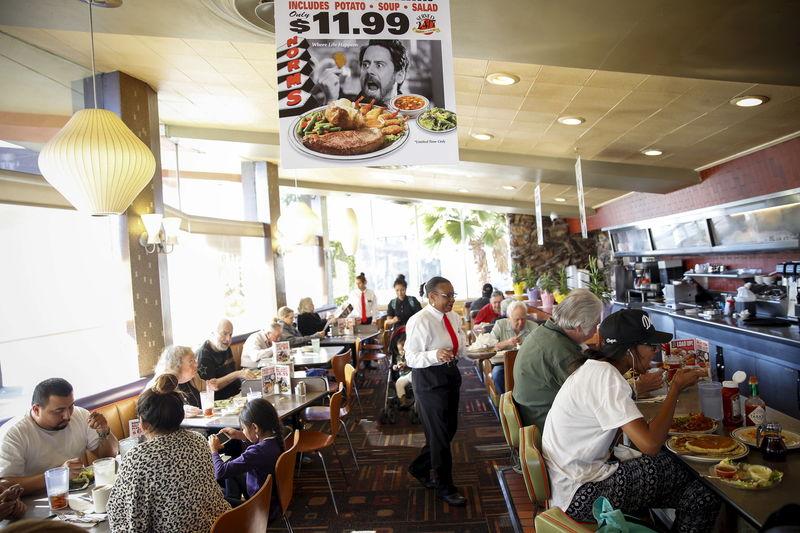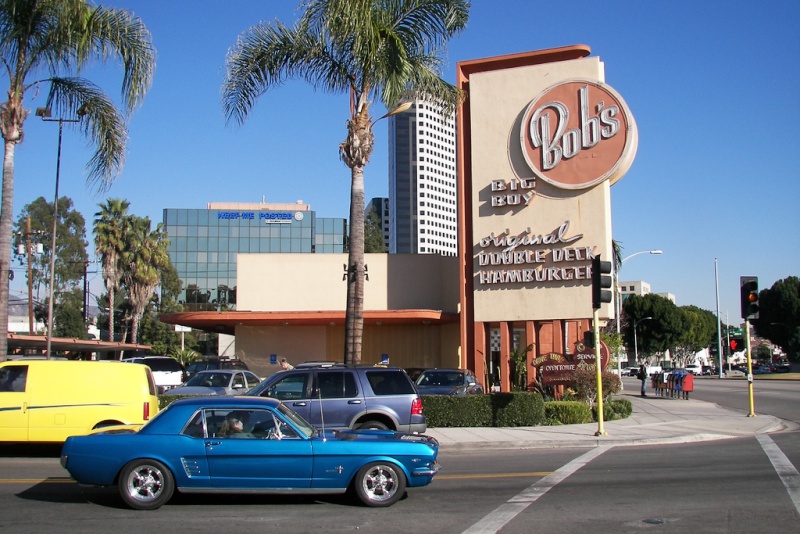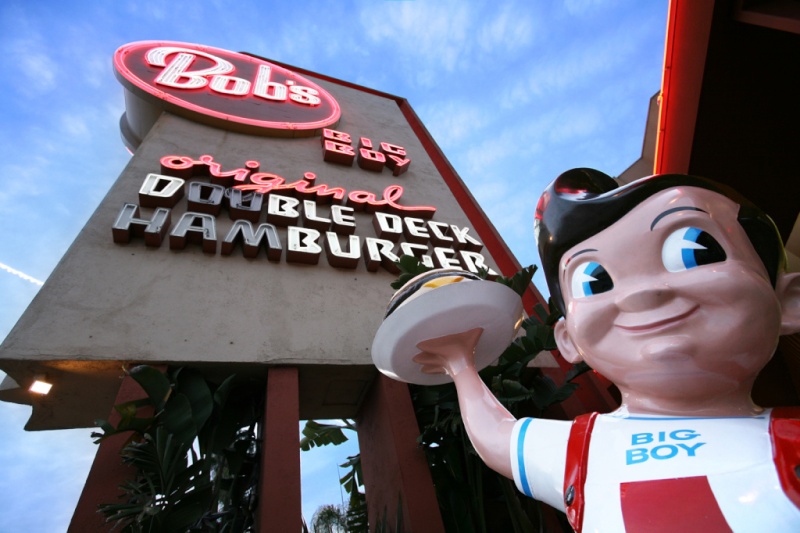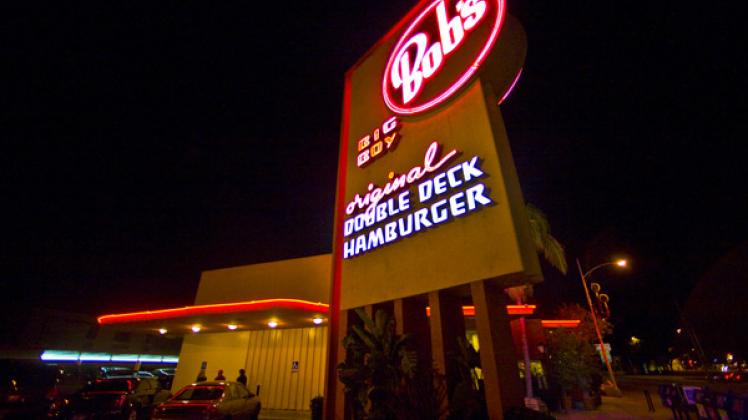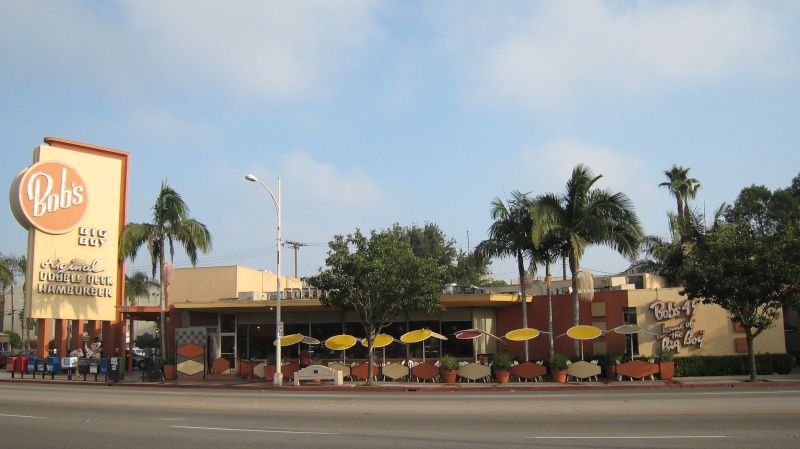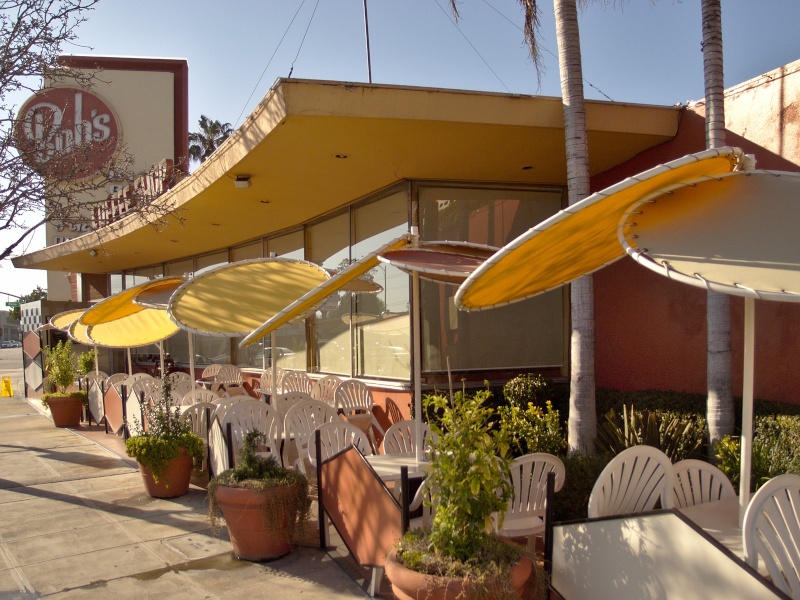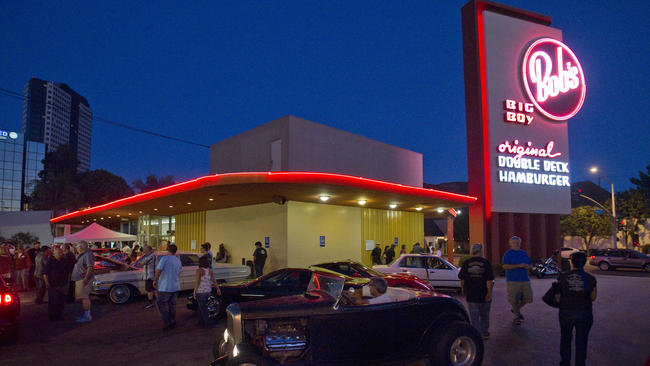Diners, Restaurants, Cafe & Bar 1930's - 1960's
+2
catfishvince
Predicta
6 participants
Traditional Kustom Hot Rod and Vintage Culture and design :: Architecture: mid century modern, Googie, Art deco :: Diner, Restaurant and Club - Googie, mid Century Modern 1950-1960
Page 5 sur 8
Page 5 sur 8 •  1, 2, 3, 4, 5, 6, 7, 8
1, 2, 3, 4, 5, 6, 7, 8 
 Re: Diners, Restaurants, Cafe & Bar 1930's - 1960's
Re: Diners, Restaurants, Cafe & Bar 1930's - 1960's
_________________
We don't care the People Says , Rock 'n' roll is here to stay - Danny & the Juniors - 1958
 Re: Diners, Restaurants, Cafe & Bar 1930's - 1960's
Re: Diners, Restaurants, Cafe & Bar 1930's - 1960's
_________________
We don't care the People Says , Rock 'n' roll is here to stay - Danny & the Juniors - 1958
 Re: Diners, Restaurants, Cafe & Bar 1930's - 1960's
Re: Diners, Restaurants, Cafe & Bar 1930's - 1960's
_________________
We don't care the People Says , Rock 'n' roll is here to stay - Danny & the Juniors - 1958
 Re: Diners, Restaurants, Cafe & Bar 1930's - 1960's
Re: Diners, Restaurants, Cafe & Bar 1930's - 1960's
_________________
We don't care the People Says , Rock 'n' roll is here to stay - Danny & the Juniors - 1958
 Re: Diners, Restaurants, Cafe & Bar 1930's - 1960's
Re: Diners, Restaurants, Cafe & Bar 1930's - 1960's
_________________
We don't care the People Says , Rock 'n' roll is here to stay - Danny & the Juniors - 1958
 Re: Diners, Restaurants, Cafe & Bar 1930's - 1960's
Re: Diners, Restaurants, Cafe & Bar 1930's - 1960's
_________________
We don't care the People Says , Rock 'n' roll is here to stay - Danny & the Juniors - 1958
 Re: Diners, Restaurants, Cafe & Bar 1930's - 1960's
Re: Diners, Restaurants, Cafe & Bar 1930's - 1960's
_________________
We don't care the People Says , Rock 'n' roll is here to stay - Danny & the Juniors - 1958
 Re: Diners, Restaurants, Cafe & Bar 1930's - 1960's
Re: Diners, Restaurants, Cafe & Bar 1930's - 1960's
_________________
We don't care the People Says , Rock 'n' roll is here to stay - Danny & the Juniors - 1958
 Re: Diners, Restaurants, Cafe & Bar 1930's - 1960's
Re: Diners, Restaurants, Cafe & Bar 1930's - 1960's
_________________
We don't care the People Says , Rock 'n' roll is here to stay - Danny & the Juniors - 1958
 Re: Diners, Restaurants, Cafe & Bar 1930's - 1960's
Re: Diners, Restaurants, Cafe & Bar 1930's - 1960's
_________________
We don't care the People Says , Rock 'n' roll is here to stay - Danny & the Juniors - 1958
 Re: Diners, Restaurants, Cafe & Bar 1930's - 1960's
Re: Diners, Restaurants, Cafe & Bar 1930's - 1960's
_________________
We don't care the People Says , Rock 'n' roll is here to stay - Danny & the Juniors - 1958
 Re: Diners, Restaurants, Cafe & Bar 1930's - 1960's
Re: Diners, Restaurants, Cafe & Bar 1930's - 1960's
_________________
We don't care the People Says , Rock 'n' roll is here to stay - Danny & the Juniors - 1958
 Copper Penny Restaurant - Richard Crowther
Copper Penny Restaurant - Richard Crowther

Architect Richard Crowther designed Googie-type restaurants in Denver contemporary with the Southern California work of Armet and Davis, masters of the genre. Like his west coast brethren, he began in the late 1940s and early 1950s, reaching an apotheosis around 1959, the date of this fine structure. Crowther was remarkably comfortable with graphics, having worked for a neon company in California in the late 1930s. He also practiced there as an architect, before moving permanently to Denver in 1948. Richard Crowther Architectural Records, WH1504, Western History Collection, The Denver Public Library.
_________________
We don't care the People Says , Rock 'n' roll is here to stay - Danny & the Juniors - 1958
 Ships Coffee Shop - Westwood
Ships Coffee Shop - Westwood
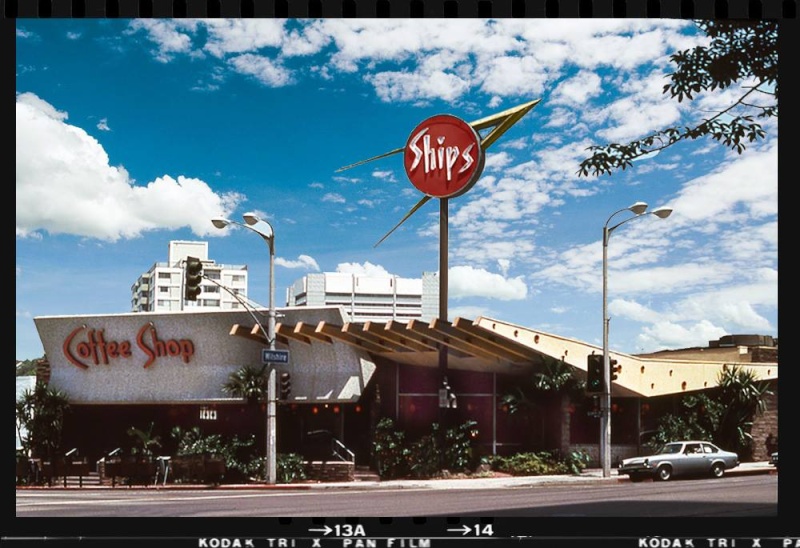
Christopher Columbus had three ships and restaurateur Emmett Shipman had three Ships — one in Westwood, one in Culver City and everyone’s favorite, which was the one at Olympic and La Cienega. Each Ships was open 24 hours and it wasn’t Denny’s. In terms of cuisine, it wasn’t that much better but it felt friendlier and classier.

If you ordered breakfast, they brought you bread instead of toast and you cooked it yourself in the toaster at your table. Every table had one, plus they were all along the counter for the folks sitting there. It was another great place to get a hot turkey sandwich and I remember that a friend of mine liked to go there because they had “the coldest milk in the world.” The waitresses were all what you’d get if you put out a casting call for “friendly coffee shop waitresses.”

All three Ships Coffee shops were opened by Shipman between 1956 and 1967 and closed within a narrow window in the eighties. They were noted for their decor and the one at Olympic and La Cienega was used as a location in several movies. They may be among the “most missed” defunct eateries in all of Southern California. Here’s a look at their classic menu…
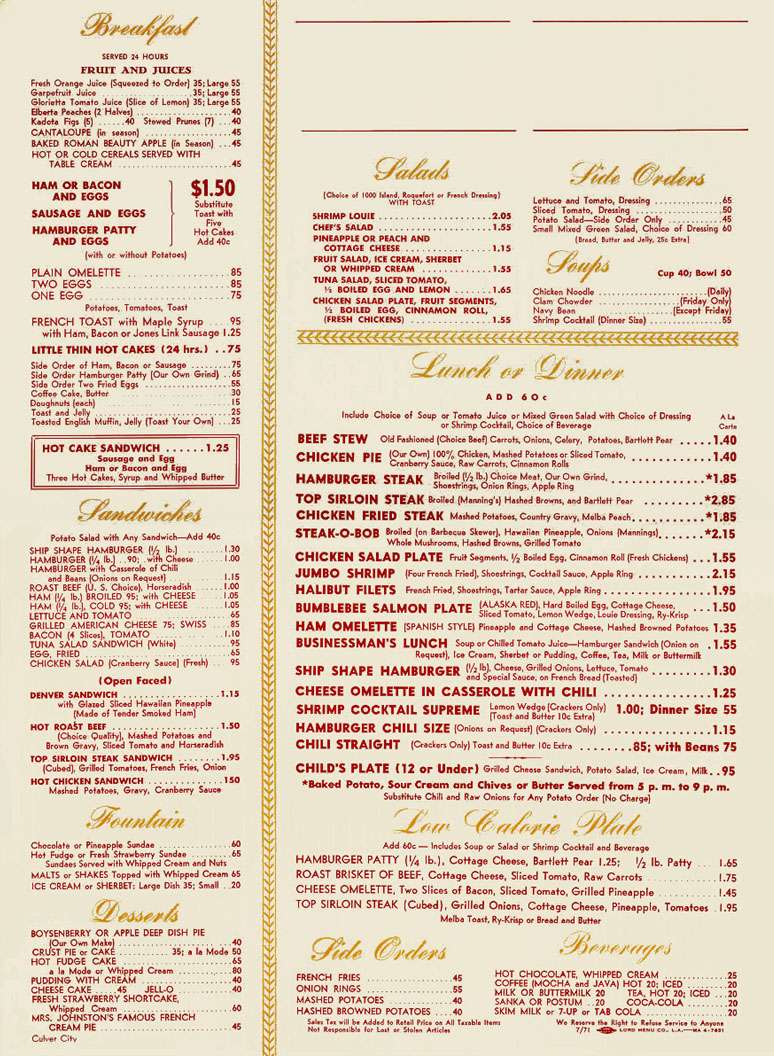

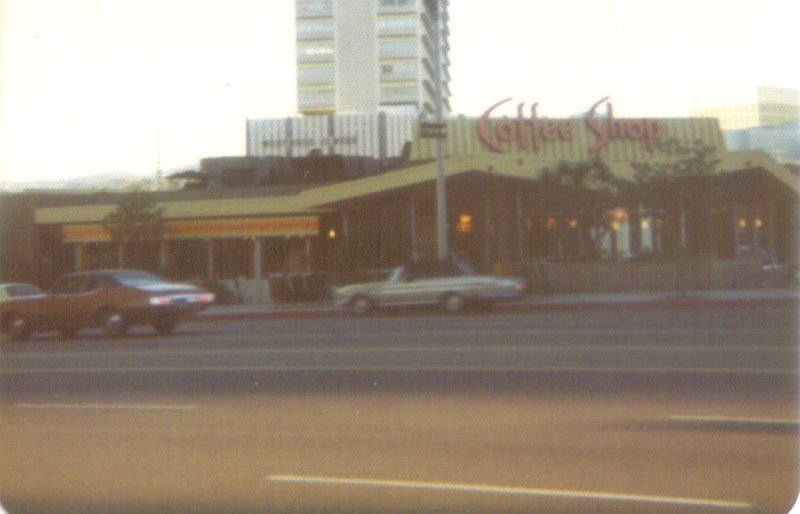
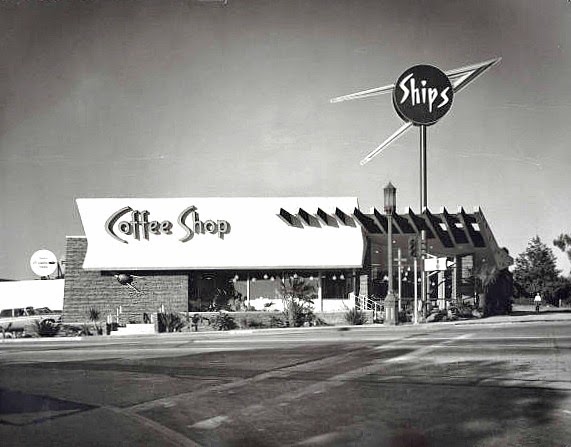
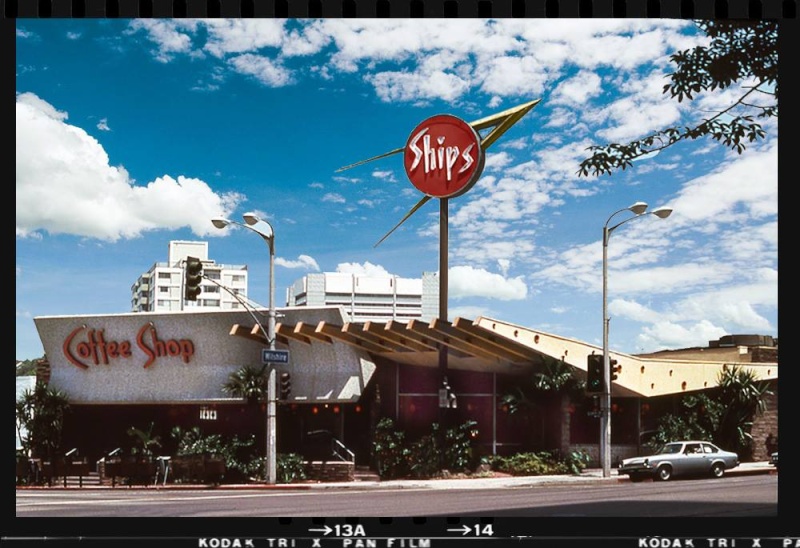
_________________
We don't care the People Says , Rock 'n' roll is here to stay - Danny & the Juniors - 1958
 Chicken Pionneer Take out Los Angeles
Chicken Pionneer Take out Los Angeles
_________________
We don't care the People Says , Rock 'n' roll is here to stay - Danny & the Juniors - 1958
 The History of NORMS & Googie Architecture
The History of NORMS & Googie Architecture
Known for its exaggerated, futuristic design, Googie architecture originated in Southern California during the 1940s and remained popular through the mid-1960s. Googie-style buildings were known for upswept roofs, geometric shapes, sharp angles, bright neon colors, and their unusual use of glass and steel. This modern, post-WWII style of architecture was heavily influenced by the Space Age, car culture, jets and the Atomic Age. It was named after John Lautner’s pioneer design of a West Hollywood coffee shop called Googies. Other coffee shops, along with motels, gas stations and fast food chains, quickly jumped on the bandwagon and continued the trend.
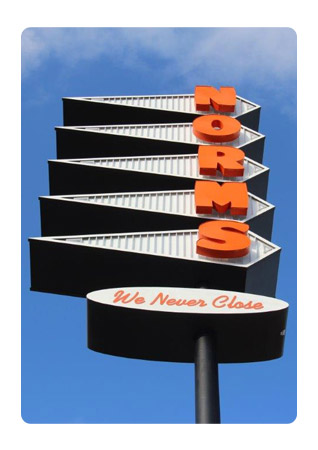
NORMS has its own history with this iconic style. NORMS’ La Cienega location, which is near Melrose, is a classic example of Googie architecture. Designed by Eldon Davis of Armet Davis Newlove Architects in Santa Monica, it opened its doors in 1957 during the peak of the Googie trend and won the National Restaurant Association’s design award at that time. Currently, it’s the oldest NORMS still operating today, and on May 20, 2015, the Los Angeles City Council voted to add it to the list of Historic-Cultural Monuments. The Los Angeles Conservancy, Cultural Heritage Commission and Councilmember Paul Koretz were instrumental in helping NORMS’ La Cienega location achieve that status. A picture of the location can be seen here.
Another NORMS location that boasts the Googie style is Huntington Park on Slauson Avenue, which is near Pacific. As the second-oldest NORMS operating today, it features full-exhibition cooking where guests can enjoy a front-seat view to the making of NORMS’ notable eats. Two later NORMS locations — Figueroa and Sunset Boulevard — mimicked the Huntington Park location’s design, but both are now closed. The last NORMS restaurant built with the Googie design was on Long Beach Boulevard at PCH in Long Beach. While that location is no longer open, the building still stands but has since changed. Only a trained eye could recognize its Googie roots.
In 1991, NORMS opened its Whittier location near Colima, and the building was a nod to NORMS’ previous Googie-styled buildings. It was designed by the same firm as the La Cienega location, Armet Davis Newlove Architects, but Victor Newlove was the architect that brought back the flavor of those early days. Now, three other locations have been based on that design: Downey, Anaheim and South Torrance. Not all locations have the same design. Some locations resemble each other, depending on when they were built. However, in each restaurant, there’s the feeling of NORMS’ architectural roots from the La Cienega design.
A Penchant for a Pennant
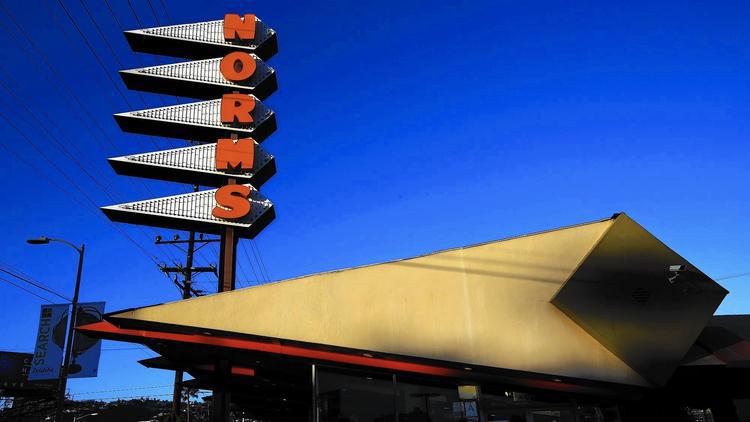
NORMS’ sawtooth pennant sign is well-recognized in SoCal and continues the Googie style of the restaurants. Originally designed for the La Cienega location, Norm Roybark and Eldon Davis actually drew it on a napkin. The original sign was metal with neon letters, and its famous washing and flashing has come to signify great food and great service. Although 13 of 18 NORMS’ locations have a sawtooth pennant sign, only some of them wash and flash. The signs are usually out of compliance with planning departments throughout SoCal, but NORMS always petitions for a variance as more restaurants are built. The city of Torrance allowed a scaled-down version in 2000, and the city of Anaheim agreed to grant a variance after moving the restaurant within the city around 1995. NORMS’ Claremont location now boasts the first freeway pennant, towering 100 feet, and the Pico Rivera location, which opened in 2014, has the first digital pennant.
http://normsrestaurants.com/googie.html

NORMS has its own history with this iconic style. NORMS’ La Cienega location, which is near Melrose, is a classic example of Googie architecture. Designed by Eldon Davis of Armet Davis Newlove Architects in Santa Monica, it opened its doors in 1957 during the peak of the Googie trend and won the National Restaurant Association’s design award at that time. Currently, it’s the oldest NORMS still operating today, and on May 20, 2015, the Los Angeles City Council voted to add it to the list of Historic-Cultural Monuments. The Los Angeles Conservancy, Cultural Heritage Commission and Councilmember Paul Koretz were instrumental in helping NORMS’ La Cienega location achieve that status. A picture of the location can be seen here.
Another NORMS location that boasts the Googie style is Huntington Park on Slauson Avenue, which is near Pacific. As the second-oldest NORMS operating today, it features full-exhibition cooking where guests can enjoy a front-seat view to the making of NORMS’ notable eats. Two later NORMS locations — Figueroa and Sunset Boulevard — mimicked the Huntington Park location’s design, but both are now closed. The last NORMS restaurant built with the Googie design was on Long Beach Boulevard at PCH in Long Beach. While that location is no longer open, the building still stands but has since changed. Only a trained eye could recognize its Googie roots.
In 1991, NORMS opened its Whittier location near Colima, and the building was a nod to NORMS’ previous Googie-styled buildings. It was designed by the same firm as the La Cienega location, Armet Davis Newlove Architects, but Victor Newlove was the architect that brought back the flavor of those early days. Now, three other locations have been based on that design: Downey, Anaheim and South Torrance. Not all locations have the same design. Some locations resemble each other, depending on when they were built. However, in each restaurant, there’s the feeling of NORMS’ architectural roots from the La Cienega design.
A Penchant for a Pennant

NORMS’ sawtooth pennant sign is well-recognized in SoCal and continues the Googie style of the restaurants. Originally designed for the La Cienega location, Norm Roybark and Eldon Davis actually drew it on a napkin. The original sign was metal with neon letters, and its famous washing and flashing has come to signify great food and great service. Although 13 of 18 NORMS’ locations have a sawtooth pennant sign, only some of them wash and flash. The signs are usually out of compliance with planning departments throughout SoCal, but NORMS always petitions for a variance as more restaurants are built. The city of Torrance allowed a scaled-down version in 2000, and the city of Anaheim agreed to grant a variance after moving the restaurant within the city around 1995. NORMS’ Claremont location now boasts the first freeway pennant, towering 100 feet, and the Pico Rivera location, which opened in 2014, has the first digital pennant.
http://normsrestaurants.com/googie.html
_________________
We don't care the People Says , Rock 'n' roll is here to stay - Danny & the Juniors - 1958
 Norms Diner restaurant 1957
Norms Diner restaurant 1957
Last week, the Los Angeles City Council designated the city’s oldest surviving restaurant of the Norms chain a historic and cultural monument. Built in 1957, the La Cienega Boulevard diner was designed by architects Louis Armet and Eldon Davis in the Googie style. The futuristic design movement originated in Southern California in the late ’40s and used bold curves and sharp angles to draw motorists to roadside businesses.
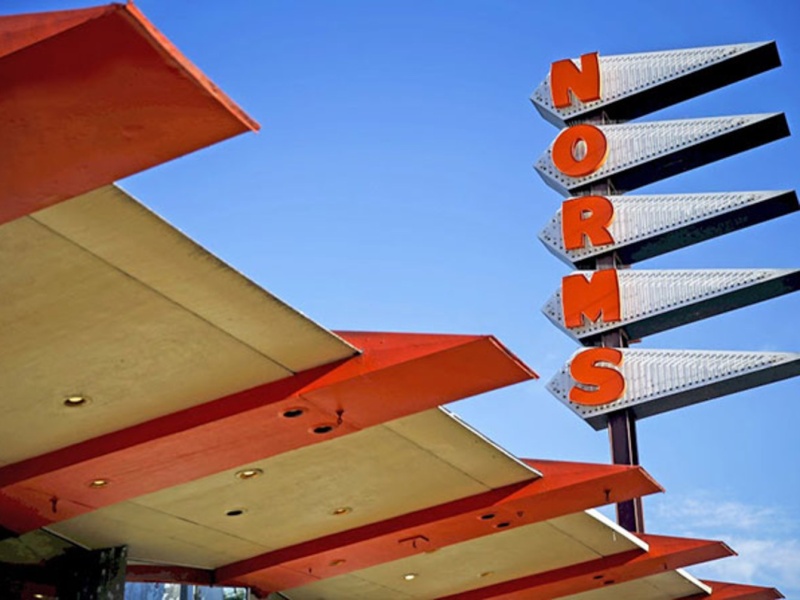
City officials heard public outcry when the building, noted for its elongated diamond façade and trademark sign, was slated for demolition. Preservationists fought swiftly for its protection on the grounds of architectural significance as well as human value—Norms, they argued, was a community mainstay.
In an event held earlier this year, Mad Men creator Matthew Weiner disclosed that his acclaimed television show got its start at the restaurant, where he penned notes on its first episodes. “We should recognize its artistic value, its symbolism as a vision of Los Angeles,” said Weiner. “It is an inspiration and a treasure and should be treated as such.”
Any demolition at Norms now requires additional approval by the city council, and with such an outpouring of support from the community, that approval may be hard to get.
For more information on the preservation of Norms La Cienega, visit laconservancy.org.

City officials heard public outcry when the building, noted for its elongated diamond façade and trademark sign, was slated for demolition. Preservationists fought swiftly for its protection on the grounds of architectural significance as well as human value—Norms, they argued, was a community mainstay.
In an event held earlier this year, Mad Men creator Matthew Weiner disclosed that his acclaimed television show got its start at the restaurant, where he penned notes on its first episodes. “We should recognize its artistic value, its symbolism as a vision of Los Angeles,” said Weiner. “It is an inspiration and a treasure and should be treated as such.”
Any demolition at Norms now requires additional approval by the city council, and with such an outpouring of support from the community, that approval may be hard to get.
For more information on the preservation of Norms La Cienega, visit laconservancy.org.
Dernière édition par Predicta le Jeu 10 Mar - 18:01, édité 1 fois
_________________
We don't care the People Says , Rock 'n' roll is here to stay - Danny & the Juniors - 1958
 Re: Diners, Restaurants, Cafe & Bar 1930's - 1960's
Re: Diners, Restaurants, Cafe & Bar 1930's - 1960's
_________________
We don't care the People Says , Rock 'n' roll is here to stay - Danny & the Juniors - 1958
 Re: Diners, Restaurants, Cafe & Bar 1930's - 1960's
Re: Diners, Restaurants, Cafe & Bar 1930's - 1960's
_________________
We don't care the People Says , Rock 'n' roll is here to stay - Danny & the Juniors - 1958
 Algemac's Coffee Shop
Algemac's Coffee Shop
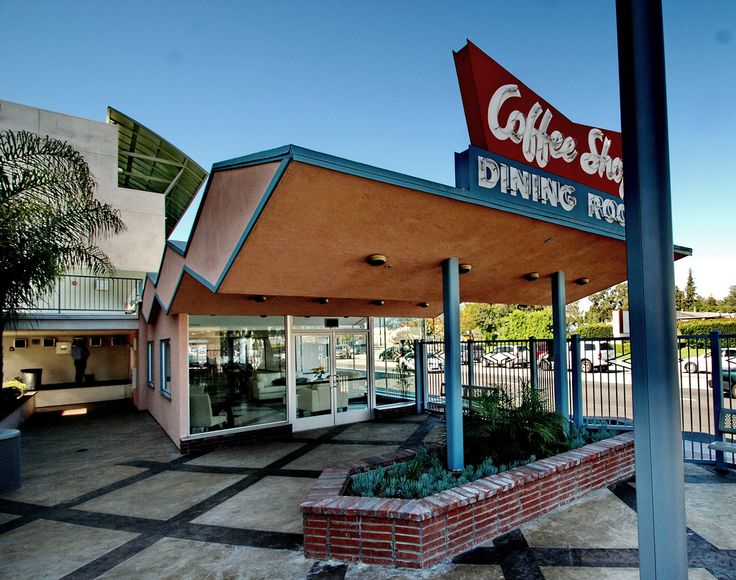

Built in 1937, Algemac's Coffee Shop closed in 2006 and was gutted in 2008. Located on San Fernando Road at the corner of Glendale Avenue in Glendale California preservationists fought hard to save it. They weren't entirely successful but they reached a compromise with developers who agreed to incorporate the original Algemac's facade into the design of a new building. I worked there in the late 70s as a hostess.
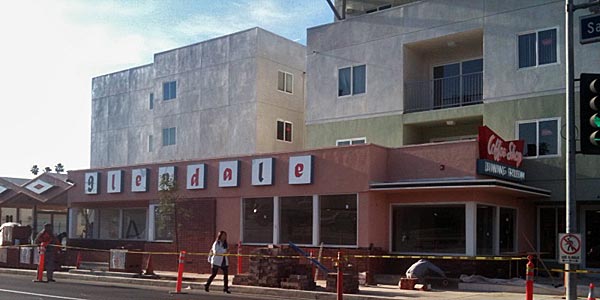




_________________
We don't care the People Says , Rock 'n' roll is here to stay - Danny & the Juniors - 1958
 Bob’s Big Boy Burbank
Bob’s Big Boy Burbank
_________________
We don't care the People Says , Rock 'n' roll is here to stay - Danny & the Juniors - 1958
 Re: Diners, Restaurants, Cafe & Bar 1930's - 1960's
Re: Diners, Restaurants, Cafe & Bar 1930's - 1960's
_________________
We don't care the People Says , Rock 'n' roll is here to stay - Danny & the Juniors - 1958
 Sherri’s Coffee Shop - Inglewood - CA
Sherri’s Coffee Shop - Inglewood - CA

Originally Sherri’s Coffee Shop, this circa-1958 Googie was designed by Martin Stern Jr., who later went on to design a buttload of high rise casinos in Las Vegas. Corrugated metal and a tasteless paint scheme have sullied the structure's charm, but at least they haven't torn the damn thing down yet.

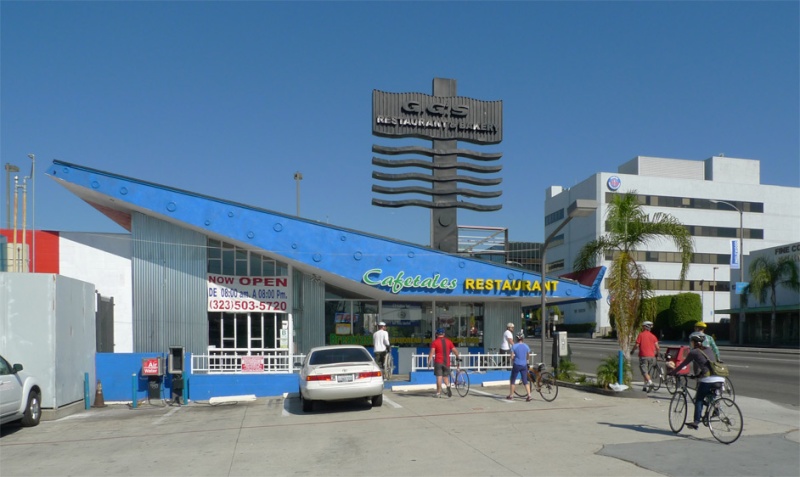
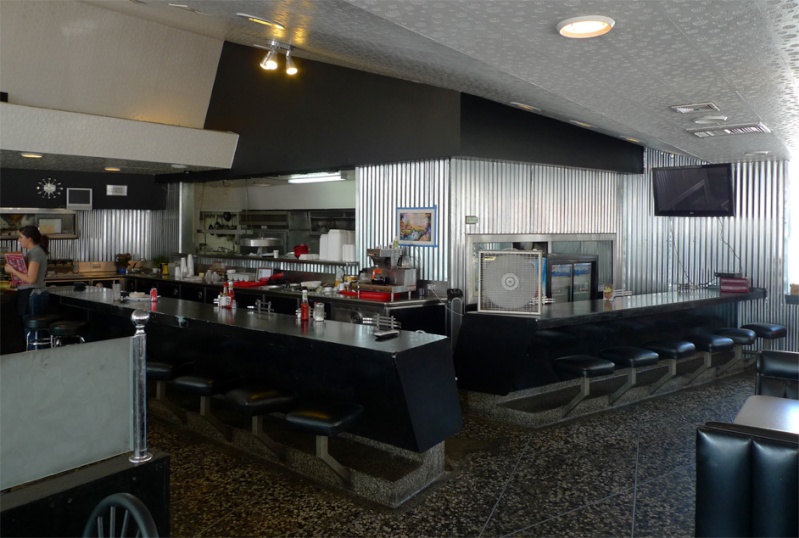
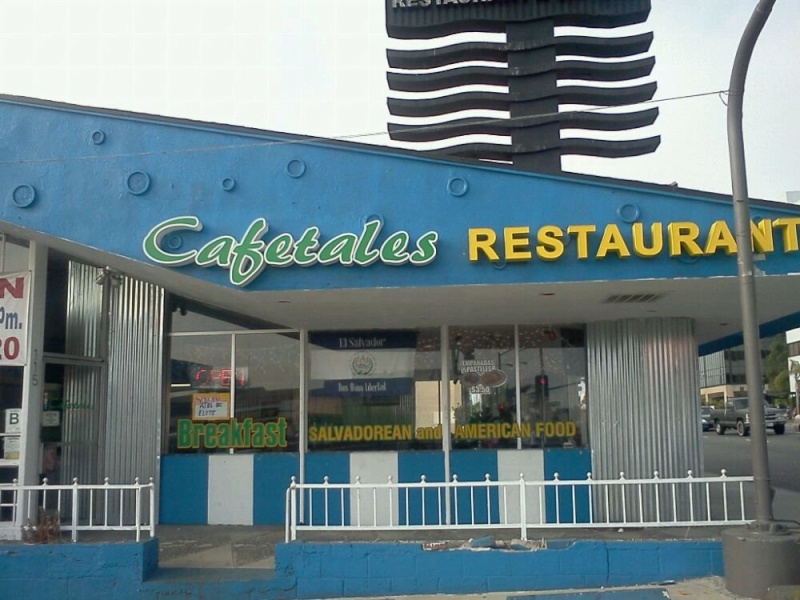
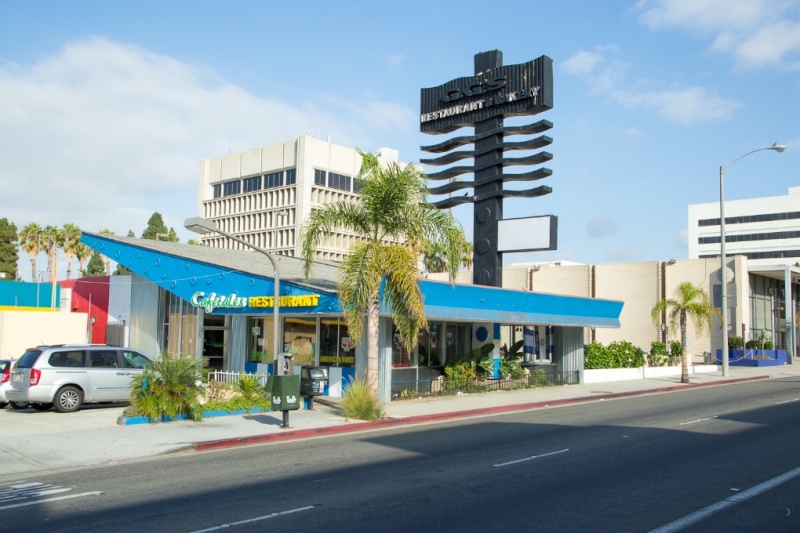
_________________
We don't care the People Says , Rock 'n' roll is here to stay - Danny & the Juniors - 1958
 Driftwood Dairy - Driftyland Dairy-Port - El Monte
Driftwood Dairy - Driftyland Dairy-Port - El Monte
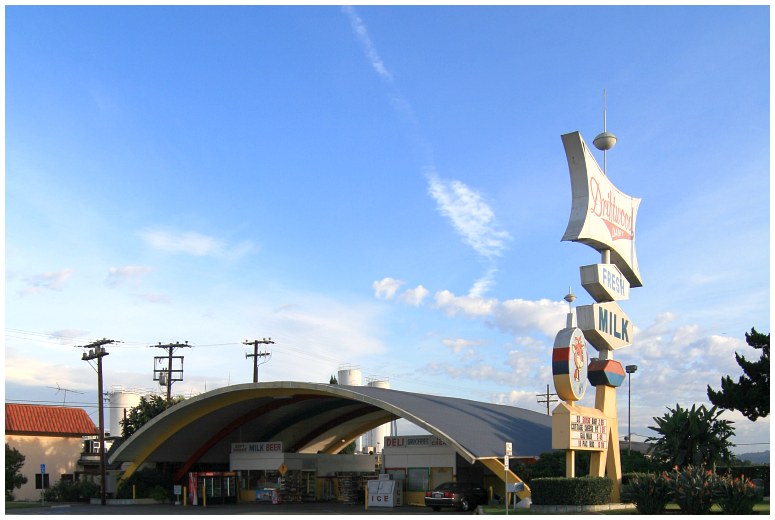
The Driftwood Dairy Drive-Thru, originally known as the Driftyland Dairy-Port, has been an El Monte institution since 1961. Above it, Drifty, the dairy's grinning cow mascot (she just loves it when you suckle from her teat!), surveys her territory from a huge, hexagonal sign, as she has for decades.


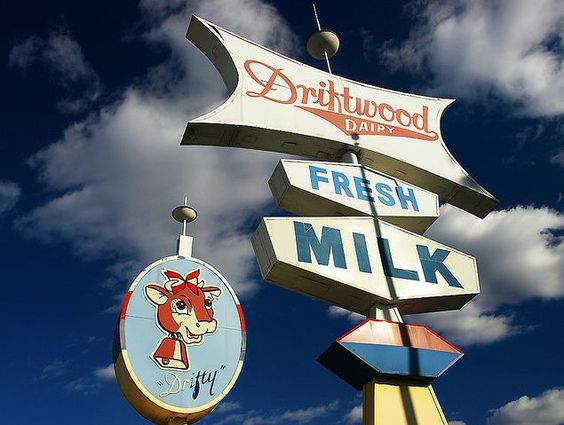
_________________
We don't care the People Says , Rock 'n' roll is here to stay - Danny & the Juniors - 1958
 Johnie's Coffee Shop
Johnie's Coffee Shop
If you want the full Johnie's experience, drive by it at night—its neon signage will be illuminated, making the structure look both garish and gorgeous. The restaurant closed for business in 2000 and is now used exclusively for shooting. HOLLYWEIRD FUN FACT: Y'know the scene in The Big Lebowski where Walter yells he's "finishing his fucking coffee"? That was filmed at Johnie's.
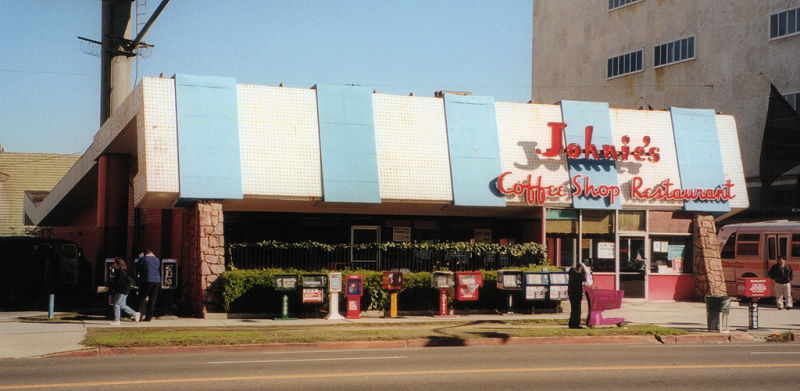
Johnie's opened in 1956 as Romeo's Times Square. Romeo's was in business a few years, becoming Ram's in the early 1960s, and Johnie's shortly thereafter.[1]
"Johnie's" is spelled in massive neon lights and flashing incandescent lightbulbs on the building's striped roof. The roof sits on rock columns, sloping down toward the back of the restaurant, ending in a sharp decline that gives the illusion of movement like a spaceship ready to take off. Alan Hess, author of two books on Googie architecture, said, "Johnie's, and the style it represents, tells us as much about that period in L.A. history as the bungalows of Pasadena told us about the 1900s or the missions told us about 19th century Southern California." He also noted that "The building embodies all of the changes in L.A.: becoming suburban, auto-oriented, also becoming a city of the future."[1]

The restaurant was purchased in 1994 by the Gold family, founders of the 99 Cents Only Stores, and closed in 2000. The family leases the Johnie's parking lot to the Wilshire Boulevard 99 Cents Only outlet two doors away.[1]
The restaurant is perhaps best known as the setting for the opening of the 1988 cult film Miracle Mile, in which a patron learns that a nuclear war is about to begin. The restaurant also appeared in a 1999 Tom Petty and the Heartbreakers music video, "Swingin';" in a 2003 Reba McEntire music video, "Somebody;" and extensively in Sean Kingston's music video "Beautiful Girls." The restaurant is seen in several movies, including Volcano, starring Tommy Lee Jones; The Big Lebowski, starring Jeff Bridges and John Goodman;[1] Reservoir Dogs starring Harvey Keitel and Tim Roth; and American History X, starring Edward Norton. Johnie's was also featured in the 2000 film Gone in 60 Seconds with Nicolas Cage.

Johnie's is located across from the May Co. department store, one of Los Angeles' best examples of Streamline Modern architecture, on the Miracle Mile. The May Co. building is now part of the Los Angeles County Museum of Art.

Johnie's was declared a historical landmark by the Los Angeles City Council on November 27, 2013
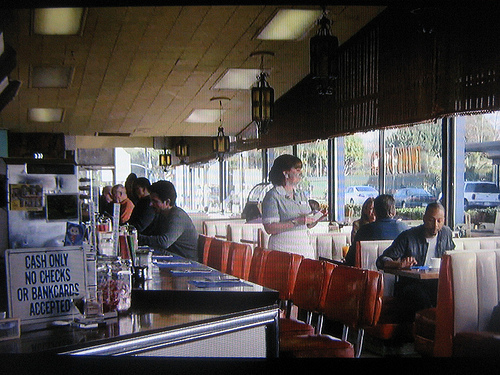


Johnie's opened in 1956 as Romeo's Times Square. Romeo's was in business a few years, becoming Ram's in the early 1960s, and Johnie's shortly thereafter.[1]
"Johnie's" is spelled in massive neon lights and flashing incandescent lightbulbs on the building's striped roof. The roof sits on rock columns, sloping down toward the back of the restaurant, ending in a sharp decline that gives the illusion of movement like a spaceship ready to take off. Alan Hess, author of two books on Googie architecture, said, "Johnie's, and the style it represents, tells us as much about that period in L.A. history as the bungalows of Pasadena told us about the 1900s or the missions told us about 19th century Southern California." He also noted that "The building embodies all of the changes in L.A.: becoming suburban, auto-oriented, also becoming a city of the future."[1]

The restaurant was purchased in 1994 by the Gold family, founders of the 99 Cents Only Stores, and closed in 2000. The family leases the Johnie's parking lot to the Wilshire Boulevard 99 Cents Only outlet two doors away.[1]
The restaurant is perhaps best known as the setting for the opening of the 1988 cult film Miracle Mile, in which a patron learns that a nuclear war is about to begin. The restaurant also appeared in a 1999 Tom Petty and the Heartbreakers music video, "Swingin';" in a 2003 Reba McEntire music video, "Somebody;" and extensively in Sean Kingston's music video "Beautiful Girls." The restaurant is seen in several movies, including Volcano, starring Tommy Lee Jones; The Big Lebowski, starring Jeff Bridges and John Goodman;[1] Reservoir Dogs starring Harvey Keitel and Tim Roth; and American History X, starring Edward Norton. Johnie's was also featured in the 2000 film Gone in 60 Seconds with Nicolas Cage.

Johnie's is located across from the May Co. department store, one of Los Angeles' best examples of Streamline Modern architecture, on the Miracle Mile. The May Co. building is now part of the Los Angeles County Museum of Art.

Johnie's was declared a historical landmark by the Los Angeles City Council on November 27, 2013


_________________
We don't care the People Says , Rock 'n' roll is here to stay - Danny & the Juniors - 1958
Page 5 sur 8 •  1, 2, 3, 4, 5, 6, 7, 8
1, 2, 3, 4, 5, 6, 7, 8 
 Sujets similaires
Sujets similaires» Garage - Service Center - USA vintage (1930s - 1960s)
» Vintage radios
» Garages jouets - Toys garage
» 1930s Harris steam-powered split-window prototype.
» Café racer
» Vintage radios
» Garages jouets - Toys garage
» 1930s Harris steam-powered split-window prototype.
» Café racer
Traditional Kustom Hot Rod and Vintage Culture and design :: Architecture: mid century modern, Googie, Art deco :: Diner, Restaurant and Club - Googie, mid Century Modern 1950-1960
Page 5 sur 8
Permission de ce forum:
Vous ne pouvez pas répondre aux sujets dans ce forum
 Connexion
Connexion